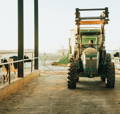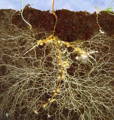International Reducing CO2 Emissions Day is about raising awareness and encouraging people all over the world to do their part in taking care of the environment and the planet by reducing their carbon footprint.
Today there is more CO2 in the atmosphere than at any time in the last 800,000 years, and the climate is roughly 1.1 degrees warmer than in the 1800s. As every corner of the Earth experiences the debilitating effects of climate change, from forest fires, drought, and severe weather events, tackling the problems of a global phenomenon can feel overwhelming. But even the smallest of actions can make the most significant changes. International Reducing CO2 Emissions Day is about how we can all be climate change revolutionaries.
Founded from the heart of the United Nations sustainable development goals, International Reducing CO2 Emissions Day emphasizes the need to build awareness for climate action. The United Nations estimates greenhouse gas emissions are currently 50 percent higher than in 1990. The goal to keep the global temperature from exceeding 1.5 degrees Celsius above pre-industrial levels (an international benchmark set at the Paris Climate Accords). We must (each of us) do more – we all need to become part of the solution.
1.5 degrees is universally considered the upper boundary to avoid the worst impacts of climate change. On our current trajectory, by the end of this century, global temperature will have risen as much as 4.4 degrees. The effects of such a sudden increase in global temperatures will result in consequences far worse than simply a few more 'Bad Weather Days'; human society as we know it would be threatened. Is that the kind of world you want your children and grandchildren to live in?

The Role of Food Production Systems and Landscape Management:
Systems which support the production of food represent almost a third of greenhouse gas emissions and are the cause of up to 80 percent of biodiversity loss. It is not only the clearing (de-wilding) of land to make way for food production that destroys biodiversity; the way crops and landscapes are grown is accelerating damage to our ecosystem (more below).
We must decouple the assumption that feeding the planet necessarily means killing the planet. It's how we farm and how we manage our landscapes that needs to change. We can coexist with Nature, integrate ourselves into Earth's natural biosphere systems - and feed a growing human population too. We can enjoy beautiful green and healthy landscapes without damaging the ecosystem.
As populations continue to grow and the demand for more food increases, ensuring food systems can meet growing demand while mitigate rising CO2 becomes critical. We need to step away from the use of synthetic fertilizers, pesticides, monoculture cropping and soil-damaging cultivation techniques. We must embrace natural plant support inputs that add life to our fragile soils (more below).
It's now beyond debate that burning fossil fuels (and other human activity) contribute to the global rise in atmospheric CO2. When CO2 gas is released into the atmosphere it is difficult (but not impossible) to remove. CO2 is a recalcitrant gas in our atmosphere; once it's there, it doesn't 'want to leave.' Without an active, constant process to remove (reduce) CO2 in the atmosphere, it continues to build up (ever higher and higher).

The CO2 / Life Paradigm:
From a 'whole ecosystem' or Earth Biosphere point of view, the mechanism whereby CO2 is kept in balance in Earth's atmosphere is actually very simple. Think of it this way; obviously, before we came along, there were fires on our planet and other natural phenomena like volcanic eruptions that released megatonnes of CO2 into the atmosphere. Yet, the rock and arctic ice records show that CO2 levels in the atmosphere have remained stable for a very long time. All those natural CO2-releasing events didn't cause a perilous spike in CO2 levels. Why?
The simple truth is that whenever anything is burned or any living thing dies, the Carbon in it is released into the atmosphere as CO2 gas (that's the Bad News). However, Nature abhors a vacuum, so new life immediately moves into 'the gap' created by death or burning. And whether that new life is a tree, a tomato, a turtle (or indeed bacterium or fungi) every cell of these living organisms contains Carbon. And the Carbon in all living things (we will see below) comes from the atmosphere. In other words, all living things sequester Carbon from the atmosphere – and the more life there is (and the less burning and death there is), the more atmospheric Carbon is sequestered.
But how exactly does this happen?

Natural Carbon Cycling and Sequestration:
Photosynthetic green plants are the engine driving Carbon's journey into all living things, and plants also facilitate Carbon's return from obscurity (after death) back into the cycle of life. Unique in the known universe, green plants possess a profound Superpower: Photosynthesis. This astounding solar-powered biochemical process has kept atmospheric CO2 in 'The Goldilocks Zone' for hundreds of millions of years on our planet. If you want to see a world where green plants are not keeping atmospheric CO2 in check - a place where runaway climate change has caused irreversible cataclysm – go check out Venus (I'm afraid that you'll need more than a raincoat for this journey).
In a criminal investigation, if you want to know what's really going on, they say "follow the money"; if you want to know how life on Earth works, it's "follow the Carbon." A simple and elegant equation tracks Carbon's path through the photosynthetic engine into the web of life on Earth. Plants (like all living things) require Carbon to build cells and regulate metabolic processes.
No Carbon – No Life.
Where do plants get it?

Plants (Uniquely) Acquire the Carbon They Need Through Photosynthesis:
Capturing the inexhaustible energy from the particles of light (photons) streaming in from the sun, the chlorophyll in every green leaf converts atmospheric CO2 and water (H2O) into a simple sugar: Glucose (C6H12O6). Follow the 'C' in this elegant equation and you'll see Carbon's path. And you'll also clearly see why Oxygen gas (O2) is 'the waste product' of the photosynthetic process: it takes 6 x CO2 molecules plus 6 x H2O molecules to synthesize one glucose (C6H12O6) molecule. That equation leaves 12 Oxygen atoms as surplus – these 12 (waste) atoms are released into the atmosphere as six molecules of O2 gas. And (luckily) Oxygen gas is the cellular catalyst (the 'fuel') that every multicellular organism on Earth needs to live – including you and me. So, when you next see a green plant, don't forget to say "Thank you"; you and I exist only because plants quietly, graciously and tirelessly supply us with every breath of life we take.
So, Carbon is captured from the air and synthesized into glucose by plants – what's the next step in Carbon's journey?
The Superpower of photosynthesis has been operating on our planet for billions of years – land plants are simply the latest organisms on Earth to acquire its transformative power – they have possessed it for (only?) 430 million years or so. Long enough to become very, very good at harnessing its power. Plants are so practised at photosynthesis that they produce a surplus of sugar (glucose) in every green leaf: at least 40% more sugar than the plant needs to build and maintain its cells, fend off pathogens, flower and reproduce. This surplus sugar (and the life-building Carbon in it) becomes the currency every plant uses to obtain all the other things it needs. Plants need more than just photosynthetically captured Carbon to survive – this is where the Carbon journey continues.
The surplus glucose plants create is traded in their immediate environment to acquire everything else they need. Remember, plants (unlike animals) cannot move to find better circumstances - they have to make a go of it wherever they are. And by using the Carbon-rich, portable, energy packets they possess (glucose), they attract, feed and orchestrate the cooperation of a microscopic universe of microbial life in the soil.

The Grand Collaboration:
And now we come to the next step in Carbon's journey through the web of life on our planet. Living plants (built cell-by-cell out of Carbon from the atmosphere) are the primary (or only) source of food for virtually every animal on Earth. And so, the Carbon in plants ends up in the bodies of every animal and every insect on Earth. Even meat-eating carnivores get their Carbon from plants (by eating herbivores or insects that have dined on plant-source Carbon). And while they live, all plant-fed creatures are sequestering Carbon taken from CO2 in the atmosphere. Learn more about the workings of the symbiosis between plants and soil microbes in our previous blog Thoughts on World Soil Day.
As per "The Grand Collaboration" section above, plants also make a massive contribution in sequestering atmospheric Carbon in their role as the benefactors (farmers) of a vast universe of microbes and fungi below the grade. In this way, the Soil (and its countless silent army of microbiota) becomes a vast carbon sink. Millions upon millions of megatonnes of atmospheric Carbon are pumped into the ground by plants every day.
Nature's Hidden Carbon Sink:
It's easy to see that a 30-metre-tall, century-old tree is holding (sequestering) a tonne or so of Carbon in its wood and leaves. Less apparent to us is that every year that tree grew to its impressive size, it was pumping carbohydrates into the ground to 'grow and trade with' an ever-expanding army of soil microbes. Every year that venerable old tree grew, it fed the soil microbiome and created the wonderous and fragile thing we call Soil. The Soil (and its silent microbial denizens that collaborate with plant roots) will have sequestered 2 to 3 times as much Carbon below grade as in the wood and leaves of the old tree we see above the ground. One mature tree = 3-4 tonnes of sequestered CO2 - and all the other environmental benefits plants provide are just a bonus!
That is how important plants are in Carbon Cycling and Sequestration in Earth's Biosphere. That (of course) assumes that one critical factor is true – the countless living creatures that constitute the Soil Microbiome are allowed to live. Sadly, that is not the case in almost all the soils in our highly industrialized world. Common practices contributing to the decline or even eradication of soil life include:
• The continued over-use of synthetic fertilizers, pesticides, and herbicides
• soil compaction and tillage
• monoculture crops (and monoculture landscapes of grass)
As I've mentioned, every time something dies, the Carbon in its body turns into CO2 gas which floats up into the atmosphere. This is true for all the living things above grade – and for all the creatures that constitute the living soil microbiome too. We have doubled down on climate disaster by growing our crops and landscapes under a synthetic chemical-based, industrialized regime. We have not only killed the soil microbiome (releasing its sequestered Carbon) but also disabled the carbon sequestration that the living soil microbiome naturally provides. That is not how it has to be; and what follows is a much more hopeful picture – one that we all need to embrace.



A Better Way:
All is not lost. A rising body of scientific research confirms that mycorrhizal fungi plays a significant role in reducing atmospheric CO2 and supporting food systems. These tiny fungal revolutionaries impact their environment by partnering with plant roots, creating a symbiosis that sends plants the water, macronutrients and micronutrients they need in exchange for a portion of the glucose plants produce in their leaves. The fungus helps plants grow in complete harmony with the ecosystem – and while helping plants grow at their best, mycorrhizal networks begin to heal the damage done to Soil by synthetics. This symbiotic relationship between plants and mycorrhizal fungi can have a revolutionary impact. Making global food systems resilient to the effects of climate change-induced drought and other disasters and sequestering more Carbon to get global warming closer to the 1.5 degree Celsius goal.
Canada's food and agricultural sector employs roughly 2.1 million people and represents $135 billion in GDP. And the landscape, garden centre and public land management sectors add another $35 billion to our economy each year. By adopting sustainable technologies like mycorrhizal fungi and other organic inputs in these sectors, we can reduce the use of harmful synthetic inputs and fertilizers. Improving Soil (by bringing it back to life) will help capture more Carbon from the atmosphere, repair soils, and protect a significant part of the Canadian economy. A win – win – win.

Join the Revolution:
How can you be a climate revolutionary on International Reducing CO2 Emissions Day?
• The United Nations estimates over 17 percent of food is wasted and that almost 10 percent of global CO2 emissions are due to food not consumed. Think about ways to mitigate food waste in your home, such as meal prepping and using unused produce for soups and juices.
• Even if you don't grow your own backyard vegetables, the produce you buy at the grocery store (or at the farmer's market) can also tremendously affect soil health. Certified Organically Grown vegetables and fruits have all been produced without using soil-killing synthetics – if you can, please support the farmers working every day to heal the Soil (and grow more nutritious food for you and I). In the same way, Certified Organic meats and dairy products are a better choice for the planet – these animals are raised with only organically grown feed stock.
Researchers at the University of Oxford have found switching to a vegan diet; a person can reduce their carbon footprint by up to 73%. The United Nations notes that switching to more sustainable diets can significantly reduce global CO2. Think about adding more plant-based meals to your routine.
• Think about adopting no-till gardening practises when planting your garden this year. Tilling became a widespread farming practice in the 18th century, allowing farmers to plant more seeds with less effort. Today, however, we are more aware of the damaging effects that tilling has on the soil microbiome. Mycorrhizal fungal networks persist and grow for thousands of years (when left undisturbed). You too can increase water infiltration and prevent soil erosion by practising no-till farming and gardening at home. You can allow these fungal networks to thrive and support plant life. And all those billions of kilometres of fungal filaments (hyphae) are made of Carbon from the atmosphere; mycorrhizal fungi are a massive, living Carbon Sink.
• By using Root Rescue Transplanter in your garden and landscapes, you can avoid the need for harmful chemical fertilizers; benefiting the environment. Plants grown without synthetics are healthier - and are enabled to protect themselves from pests and diseases. Healthy soils absorb more water, are more resilient to erratic weather patterns, and capture more CO2.
• There is no harmful runoff from soils that are alive with beneficial soil microbes (such as mycorrhizal fungi). Nothing bad happens downstream from your property; any rainwater or irrigation not absorbed and held by your Healthy Soil leaves your land as clean, unpolluted water.
Live and let live.
Learn More On our youTube Channel
Root Rescue Learning Channel


